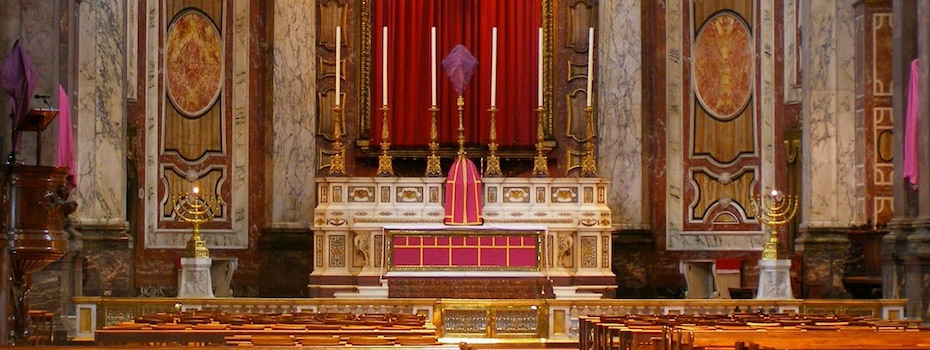 My favorite Catholic architect is the Franco-American Emmanuel Louis Masqueray (1861-1917). In his day he was one of the most noted architects in the country. When I was a boy my father drove me by his grave at Calvary Cemetery in St. Paul, Minnesota. We got out of the c…
My favorite Catholic architect is the Franco-American Emmanuel Louis Masqueray (1861-1917). In his day he was one of the most noted architects in the country. When I was a boy my father drove me by his grave at Calvary Cemetery in St. Paul, Minnesota. We got out of the c…
Our Advertising Partners
-
Many of our "before and after" series involve major restorations or renovations, and while those projects are clearly of interest,...
-
To the person who simply enjoys beautiful art and architecture, distinctions like "baroque" or "rococo" might seem overl...
-
The global pandemic has disrupted the normal celebration of the Holy Week in Spain, where, for a second year, the government has forbidden t...
-
It is well enough known that when Benedict XVI rose to the papal office one of the tasks he set about was attempting to show continuity with...
-
The Canons Regular of St. John Cantius in the Archdiocese of Chicago are well enough known to many of our readers and of course are primaril...
-
The mitre is one of the most recognizable symbols of prelates of the Church, specifically of bishops up to the Roman pontiff himself -- thou...
Blog Archive
-
▼
2022
(261)
-
▼
December
(22)
- Catholic Ecclesiastical Architect: E.L. Masqueray
- Traditions of the Solemn Papal Mass: Canonization ...
- The Orsini Mitres (Pope Benedict XIII)
- Vestments of Cardinal Gian Carlo Bandi, Nephew of ...
- Dom Lambert Beauduin's 1914 Programme for (Genuine...
- Book Review: The Once and Future Roman Rite by Dr....
- Paleochristian Baptismal Pools from Roman Tunisia
- An "Everyday" Solemn Mass Set from Renaissance Flo...
- The Altar and Its Canopy: The Tester
- The Oratorian Church of Santo Tomas y de San Felip...
- The Church of the Immaculate Heart of Mary (Brompt...
- An Antependium of the Duomo di Grosseto Featuring ...
- Minor Roman Basilicas: San Saba
- A Papal Mantum of Pope Benedict XV
- Marian Offerings from Altarworthy Vestments
- Minor Roman Basilicas: San Nicola in Carcere
- Mitre and Chasuble of Pope Pius IX Used at the Fir...
- Choir of the Cathedral of S. Alessandro Martire in...
- St. Raphael’s Cathedral: A Proposal by Michael Bursch
- A Brief Review of the History, Function and Forms ...
- The Formale
- Liturgical Art as Visible Signs of Continuity
-
►
November
(22)
- Counter-Reformation Churches of Rome: Sant'Andrea ...
- Before and After: St. Joseph's in Leavenworth, Kansas
- Three Titular Cardinals of San Lorenzo in Lucina a...
- Baroque Theatricality and Vestments as Seen in the...
- The Iconic 'A Griccia' Motif in Renaissance Vestments
- The Chapel of the Martyrs of the Cathedral of Otranto
- St. Cecilia, Virgin and Martyr, and Her Basilica i...
- Festal Venetian Hangings
- The History and Forms of the Christian Altar: The ...
- Batchelder Tiles: Our Lady of Victory Chapel
- Vestments and Pontificals of Cardinal Vincenzo Mar...
- Showcasing One of the Largest Vestment Collections...
- Paintings of the Old Sacristy of the Gesù in Rome
- Our Lady of Walsingham Shrine: The Slipper Chapel ...
- Minor Roman Basilicas: San Stefano Rotondo and "Th...
-
▼
December
(22)
Donate
Copyright ©
Liturgical Arts Journal | Powered by Blogger




















































